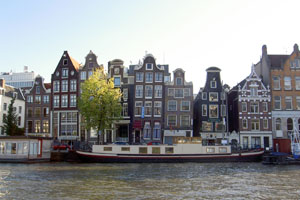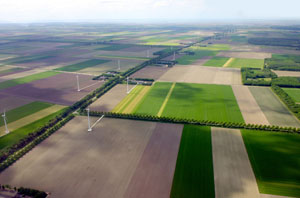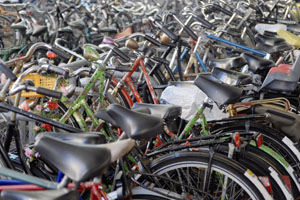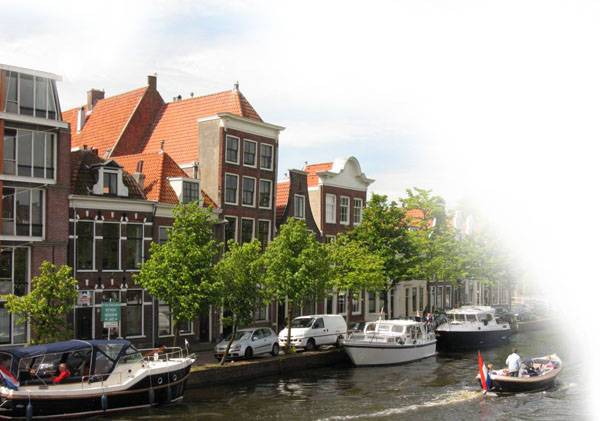The Netherlands
History
The land that now forms the Netherlands has been inhabited for around 100,000 years. However, the country’s recorded history really began with the Roman conquest, led by Julius Caesar in around 57 BC. The Romans built the first military forts and cities, and introduced writing. Following the decline of the Roman Empire, the Netherlands became part of the Holy Roman Empire. Much of what is now the western Netherlands was barely inhabited swampland until around 1000 AD, when local farmers began draining and cultivating it. This expansion in land use helped the country to thrive, and higher productivity allowed workers to become tradesmen. Guilds were established and markets developed as production exceeded local demand. Towns and cities grew rapidly, and were home to a new mercantile middle class. As the cities grew in wealth and power, they became virtual independent republics, and were constantly at war with one another. They were eventually united by the Duke Philip the Good of Burgundy between 1430-1433. Prior to this time the local people usually identified themselves by the town where they lived, or as subjects of the Holy Roman Empire, but this unification is widely considered the moment when the Dutch became a nation. The region’s trade developed rapidly, especially in the areas of shipping and transport.  The Netherlands had become possessions of the Habsburg dynasty in the 16th century, but in 1548, the Hapsburg ruler Charles V granted the Seventeen Provinces of the Netherlands nominal independent status. However, Charles’ son Philip II of Spain, a devout Catholic, was appalled by the success of the Reformation in the region and the rise of Calvinism. In 1568 he passed a sentence condemning all three million inhabitants of the Netherlands to death as heretics. Unsurprisingly this prompted a revolt. Led by William of Orange, an ancestor of the present Queen, the Dutch declared full independence from Spain in 1579, as seven rebellious provinces formed the "United Provinces". The Spanish lost control of the Netherlands after 20 years, although the war dragged on for another 60, until a peace treaty of Westphalia of 1648 confirmed the independence of the United Provinces. The country would soon be known overseas as “Holland” (named after the most dominant of the seven provinces). During this time Holland became an important trading centre in Northern Europe, and founded colonies around the world. The nation flourished during the 17th century, an era known to the Dutch as the Golden Age. However, following full independence a slow decline set in.
The Netherlands had become possessions of the Habsburg dynasty in the 16th century, but in 1548, the Hapsburg ruler Charles V granted the Seventeen Provinces of the Netherlands nominal independent status. However, Charles’ son Philip II of Spain, a devout Catholic, was appalled by the success of the Reformation in the region and the rise of Calvinism. In 1568 he passed a sentence condemning all three million inhabitants of the Netherlands to death as heretics. Unsurprisingly this prompted a revolt. Led by William of Orange, an ancestor of the present Queen, the Dutch declared full independence from Spain in 1579, as seven rebellious provinces formed the "United Provinces". The Spanish lost control of the Netherlands after 20 years, although the war dragged on for another 60, until a peace treaty of Westphalia of 1648 confirmed the independence of the United Provinces. The country would soon be known overseas as “Holland” (named after the most dominant of the seven provinces). During this time Holland became an important trading centre in Northern Europe, and founded colonies around the world. The nation flourished during the 17th century, an era known to the Dutch as the Golden Age. However, following full independence a slow decline set in.
Napoleon Bonaparte occupied the country in 1795, encountering little resistance from a nation that largely supported his republican ideals. In 1806 Napoleon restyled the Netherlands into the Kingdom of Holland, with his brother Louis as king, but he quickly annexed the fledgling nation into the French empire when Louis began to put Dutch interests ahead of those of France. In 1815, following the defeat of Napoleon, the country became an independent monarchy once more. This ‘United Kingdom of the Netherlands’ originally consisted of what is now the Netherlands and Belgium, but the Belgians declared independence from the North in 1830. In 1848, unrest all over Europe prompted King William II to agree to democratic reform and the Netherlands became a constitutional monarchy. The Netherlands remained neutral when World War I broke out in 1914. The country declared its neutrality again at the outbreak of World War II in 1939, but Nazi Germany invaded in May 1940, it remained under German occupation for 5 years. Liberation Day is still commemorated on May 5 each year. In the 1950s and 60s the Dutch economy expanded rapidly. Demand for labour meant immigration was encouraged, first from Italy and Spain, then from Turkey and Morocco. Combined with immigration from former colonies such as Indonesia, Surinam and Netherlands Antilles, the Netherlands became the multicultural society it is today. The 60s and 70s were also a time of social and cultural upheaval. Class and religious divisions began to break down, and today, the Netherlands is regarded as a very liberal country.
The Netherlands remained neutral when World War I broke out in 1914. The country declared its neutrality again at the outbreak of World War II in 1939, but Nazi Germany invaded in May 1940, it remained under German occupation for 5 years. Liberation Day is still commemorated on May 5 each year. In the 1950s and 60s the Dutch economy expanded rapidly. Demand for labour meant immigration was encouraged, first from Italy and Spain, then from Turkey and Morocco. Combined with immigration from former colonies such as Indonesia, Surinam and Netherlands Antilles, the Netherlands became the multicultural society it is today. The 60s and 70s were also a time of social and cultural upheaval. Class and religious divisions began to break down, and today, the Netherlands is regarded as a very liberal country.
The Netherlands was a founding member of both the European Union and NATO, and participated in the introduction of the Euro in 1999. As a modern industrialized nation it is also a large exporter of agricultural products.
Culture and society
 With a population of over 16 million in such a small country, efficient planning is an essential way of life in the Netherlands. Planning, regulating and organizing are of major importance to the Dutch. Universal rules and regulations in society, combined with good internal discipline, bring stability to life and reduce uncertainty. There is a strong need for social and personal order. Equal rights for everyone are guaranteed by law here, and egalitarianism forms a central tenet of Dutch society. A downside of this is that decision-making at governmental and business level can often be slow and involved, since all peripheral concerns must always be taken into account. However, the majority of the population are happy with their quality of life, and the social welfare system is internationally recognised as being excellent. When socialising, the Dutch enjoy visiting bars and cafés, and cinemas are also very popular. They are keen on sport and fitness, music, social clubs and organised events. They also love flowers – Dutch homes are often full of houseplants, and bunches of flowers are frequently given as gifts when visiting friends or relatives.
With a population of over 16 million in such a small country, efficient planning is an essential way of life in the Netherlands. Planning, regulating and organizing are of major importance to the Dutch. Universal rules and regulations in society, combined with good internal discipline, bring stability to life and reduce uncertainty. There is a strong need for social and personal order. Equal rights for everyone are guaranteed by law here, and egalitarianism forms a central tenet of Dutch society. A downside of this is that decision-making at governmental and business level can often be slow and involved, since all peripheral concerns must always be taken into account. However, the majority of the population are happy with their quality of life, and the social welfare system is internationally recognised as being excellent. When socialising, the Dutch enjoy visiting bars and cafés, and cinemas are also very popular. They are keen on sport and fitness, music, social clubs and organised events. They also love flowers – Dutch homes are often full of houseplants, and bunches of flowers are frequently given as gifts when visiting friends or relatives.
Insights:
- Virtually everyone shakes hands in the Netherlands, both upon greeting and upon departure. In informal situations, women may also exchange three kisses, on alternating cheeks, with both men and women if they are either friends or relatives.
- Many foreigners can find the Dutch direct and abrupt at first. However, there is no intention to appear rude. The Dutch believe that if you ask for what you want, you probably will get a direct answer.
- 75% of the Dutch speak English. 45% also speak a second foreign language. However, Dutch is the official language.
- "Overleg" means in conference with, or consensus. In decision-making, people who may be affected will be consulted. This can slow the decision-making process, but it ensures that everyone’s view is heard.
- Punctuality is very important to the Dutch. Being late for an appointment is considered rude, particularly in business.
- Dutch society values diversity. Everyone is entitled to his or her opinion and efforts are made to find compromises. The Dutch do not like to leave an argument unsettled.




